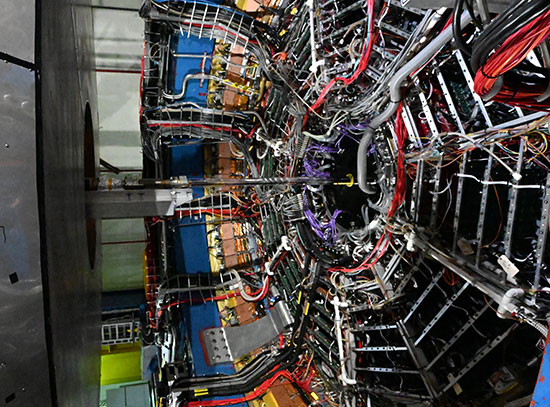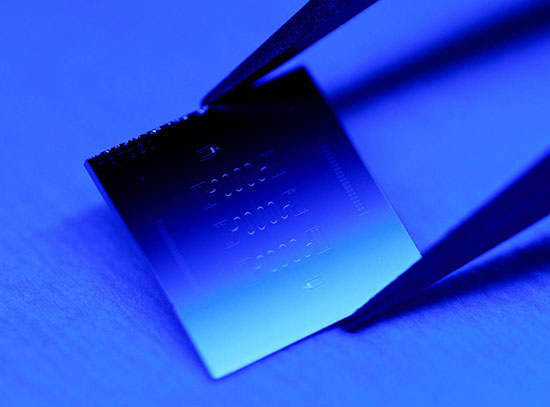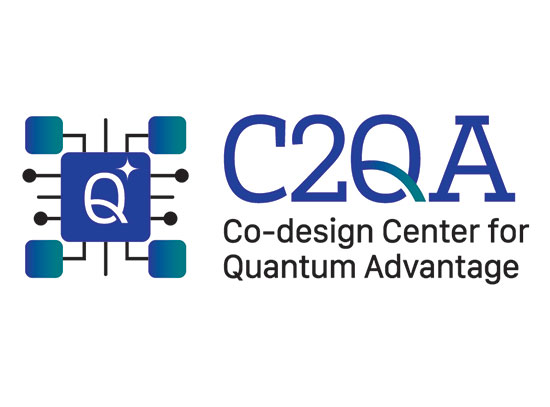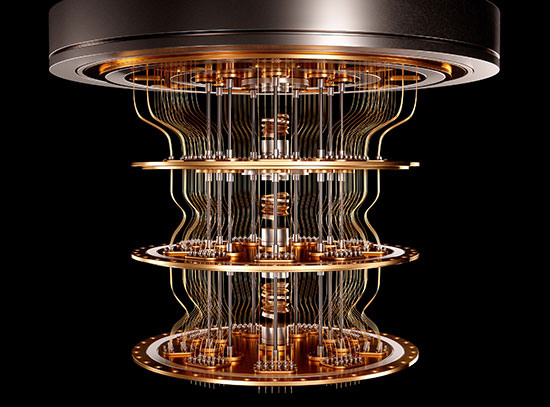2025 Annual RHIC & AGS Users' Meeting Celebrates Past and Looks to the Future
25 years of discoveries at the Relativistic Heavy Ion Collider; latest findings and challenges; path to the Electron-Ion Collider; posters, awards, and more!
June 26, 2025
By Karen McNulty Walsh and Amber Aponte
 enlarge
enlarge
The 2025 RHIC & AGS Users' Meeting took place at Brookhaven National Laboratory and online May 20-23, 2025. This group shot was taken during the plenary session on Thursday, May 22. (Kevin Coughlin/Brookhaven National Laboratory)
Nuclear physicists, theorists, students, and others gathered for the 2025 RHIC & AGS Users’ Meeting at the U.S. Department of Energy’s (DOE) Brookhaven National Laboratory May 20-23 to recap nuclear physics successes, hear the latest happenings, and plan for future discoveries. The meeting took place during the 25th and final run of the Relativistic Heavy Ion Collider (RHIC), a flagship DOE Office of Science user facility for nuclear physics research that will soon be transformed into the world’s only Electron-Ion Collider (EIC). It featured workshops, plenary sessions, posters, and a special symposium — all filled with reflection and celebration of RHIC’s 25 years, the latest science results, and reports on how the transition from RHIC to the EIC will take place.
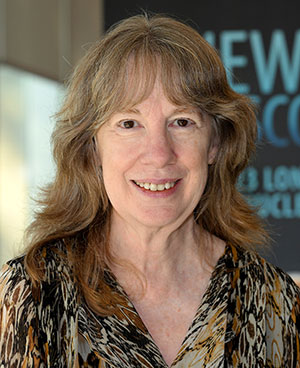 enlarge
enlarge
Brookhaven National Laboratory Director JoAnne Hewett (Kevin Coughlin/Brookhaven National Laboratory)
“This is an incredible milestone for this facility; the 25 years of science at RHIC have been nothing short of amazing, and you’re not done yet,” said Lab Director JoAnne Hewett, in her opening remarks at the plenary session on Thursday, May 22. While acknowledging technical challenges that delayed the start of collisions during this year’s run, Hewett emphasized the Lab’s commitment to delivering the data needed by RHIC’s STAR and sPHENIX detectors to complete RHIC’s science program.
Throughout the meeting, speakers recalled RHIC’s phenomenal achievements exploring how protons get their spin and in generating/discovering and characterizing the quark-gluon plasma (QGP). This unique form of matter — composed of fundamental particles typically locked within protons and neutrons — is created when quarks and gluons are liberated from the confines of ordinary matter by RHIC’s energetic smashups of atomic nuclei traveling close to the speed of light.
“RHIC is the most versatile and one of the most challenging machines to run in the world to date,” said Associate Laboratory Director (ALD) for Nuclear and Particle Physics Abhay Deshpande, pointing out the wide range of nuclei RHIC has brought into collisions over an enormously wide range of energies. Deshpande, who is also a professor at Stony Brook University, had been interim ALD since July 2024 and has also served as EIC science director since 2017, with a history at Brookhaven that goes back more than 20 years. As Hewett noted in introducing Deshpande, “He’s the perfect choice for this role, and I’m very excited that he has chosen to take it on.”
“I’m looking forward to working with all of you as ALD,” Deshpande said. “It’s going to be an interesting time, coming to the end of the RHIC era and starting into the EIC; both are equally close to my heart.”
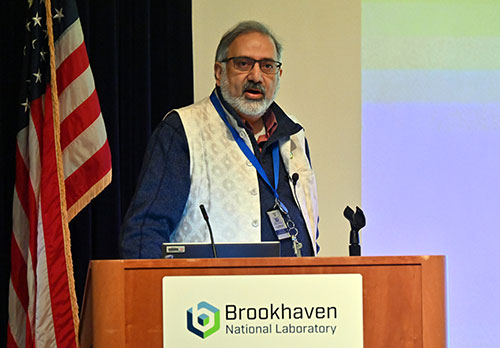
Abhay Deshpande, a Stony Brook University professor who also serves as Associate Laboratory Director for Nuclear and Particle Physics and Science Director for the Electron-Ion Collider (EIC) at Brookhaven National Laboratory (Kevin Coughlin/Brookhaven National Laboratory)
In looking back over the past 25 years, Deshpande recalled how he’d just arrived at Brookhaven Lab as a RIKEN fellow when RHIC started colliding ions in 2000. He cited the impressive publication records of STAR and PHENIX, two of RHIC’s original detectors, since then. Both detectors operated from RHIC’s beginning in 2000, along with two smaller detectors with shorter planned run times known as PHOBOS and BRAHMS. PHENIX ceased taking data in 2016 to make way for sPHENIX, which Deshpande referred to as, “the new kid on the block.” This latest detector turned on in 2023 and already has two papers submitted for publication — “a very impressive accomplishment,” Deshpande said.
As he pointed out RHIC’s major findings on proton spin and QGP — and collision rates, energies, and other discoveries that have pushed well beyond RHIC’s initial goals — Deshpande said, “Having done studies with heavy ion collisions and polarized protons for which RHIC was originally planned, if you have good detectors and good people, you can get into things that are unusual.”
He also extolled the accelerator apparatus’s ancillary benefits to society: producing medical isotopes; simulating space radiation for NASA studies; providing beams to academic and industrial users; and R&D for future facilities and applications — all of which will continue as RHIC transitions to the EIC.
Kudos from the Office of Nuclear Physics
The first order of business, Deshpande said, is to complete the RHIC science program, a key motivator for the construction of sPHENIX, as spelled out in the U.S. Nuclear Science Advisory Committee’s 2023 Long Range Plan for Nuclear Science.

Sharon Stephenson from the U.S. Department of Energy's Office of Science, Office of Nuclear Physics, from last year's users' meeting. This year she participated remotely. (Kevin Coughlin/Brookhaven National Laboratory)
“We look forward to the completion of the scientific mission,” said Sharon Stephenson, physics research division director for the DOE Office of Science (SC) Office of Nuclear Physics (NP), which provides the bulk of funding for RHIC and the future EIC.
Stephenson expressed strong kudos for the RHIC program, saying, “The scientific accomplishments at RHIC are remarkable.” She called STAR, with 100 publications in the prestigious journal Physical Review Letters, “one of the most productive experiments/collaborations in all of NP history, maybe all of SC history as well.” She praised PHENIX’s ongoing productivity as a “huge indicator” of that collaboration’s impact. And she noted that her reading of the two sPHENIX preprints shows that “your calorimeter works well, and the sPHENIX tracking systems work really well — so we are eager to see sPHENIX science, especially [from] the gold-gold collisions.”
Stephenson also reflected on Deshpande’s mention of prioritizing retention of data and analysis methods from all RHIC’s experiments for future use. RHIC physicists will be continuing to analyze data for many years, and future EIC physicists will likely want to look back. “The ‘multimessenger’ era for heavy ion physics really resonates with me,” she said.
“This community is also known for your creativity and your resilience and your innovation,” Stephenson said as she described all the areas of science supported by NP — including the exploration of proton and nuclear structure and the theory and accelerator advances that underpin discoveries at RHIC.
Run 25 reboot
The plan for RHIC Run 25 was to start near the end of March with collisions of gold nuclei at RHIC’s highest energy, 200 billion electron volts (GeV), and potentially take a break to avoid running the collider in the challenging heat of summer. But as Deshpande and RHIC Run Coordinator Travis Shrey reported, just as physicists were ramping up power to the accelerator’s twin 2.4-mile-circumference rings of superconducting magnets, an electrical short in one ring forced them to power down. Finding and repairing the short took time — and imposed a new reality.
“RHIC is unbelievably complicated — from a physics point of view and from an engineering point of view,” Shrey said. “There are a limited number of places in the wiring that you can search for a short, which makes things difficult.” Even after finding the wire with the short, he noted, “You can't just pull it out.” The wires that provide power to RHIC’s superconducting magnets are all bundled together in a balanced way inside enormous cryostats that keep the magnets cold enough to produce their powerful, particle-steering magnetic fields.
 enlarge
enlarge
Schematic showing particles emitted from a 200 GeV gold-gold collision at the Relativistic Heavy Ion Collider (RHIC) striking components of the STAR detector. (STAR Collaboration)
Shrey recounted the painstaking process a talented team of accelerator physicists, engineers, technicians, welders, Environment, Safety and Health professionals, and other support staff employed to troubleshoot the short. By the time Shrey gave his talk, all repairs were complete and RHIC operators were getting ready to power up again. Gold-gold collisions started at 200 GeV center-of-mass energy on June 9, 2025.
As of this writing, the total amount of funding for this calendar year — and thus RHIC’s available run time — is still to be determined. If given the go-ahead to run as planned, RHIC physicists are hopeful they can meet the goals for collecting the needed gold-gold collision data. This assumes RHIC operates well in the summer despite the heat and humidity.
“Depending upon the weather conditions and operating efficiency, decisions will have to be made on a daily or weekly basis,” Deshpande said. An advisory committee will meet in September or early October, when progress on meeting physics goals and the funding picture is clearer, “to see how we’ll proceed with the second half of the run,” he said.
Meanwhile, even with the delay, physicists from STAR and sPHENIX have been busy.
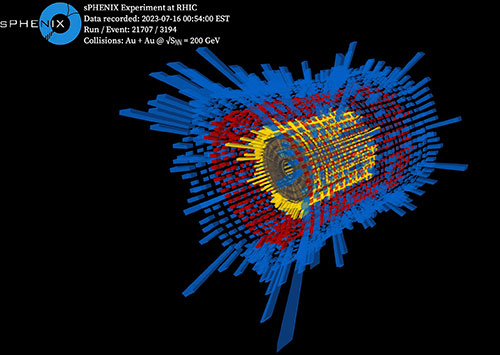 enlarge
enlarge
Signals of particles produced in a 200 GeV gold-gold collision as picked up by sPHENIX, the newest detector at the Relativistic Heavy Ion Collider (RHIC), in 2023. (sPHENIX Collaboration)
Yu Hu, a STAR collaborator from DOE’s Lawrence Berkeley National Laboratory, described how the collaboration has been fine-tuning their detector systems using cosmic rays — particles that stream from celestial events beyond Earth’s atmosphere and regularly traverse RHIC’s detectors. He also recapped the successes of Run 24, which also ran through summer. Hu described how the collaboration met its goals for collecting data from proton-proton collisions and made progress on gold-gold goals even while “weathering” several weather-related events — thanks to “the tireless efforts of the STAR shift crews, the STAR operation team, and the strong support from the RHIC/Collider-Accelerator Department/site-support team.” With Run 25 now also going through summer, Hu said, “I think we are prepared … and looking forward to getting more physics!”
Rosi Reed, an sPHENIX collaborator from Lehigh University, noted that rather than dwell on the present challenges, “We should look at how far we’ve come in so little time: We started in 2012 with a conceptual idea. Three years later we started the collaboration. We managed to build a detector through the pandemic, and by January 2023 we had real data. That’s a tremendous amount of progress in a little over a decade!”
The sPHENIX team has also been very productive while waiting for beam, Reed said. For example, they used cosmic rays to align components of their tracking detectors, commissioned new power supplies for their time projection chamber, and worked on strategies to keep sensitive detector components and signal readout channels from being overwhelmed. “We wanted to verify that we’re ready for data and find any remaining issues,” she said, including while sending data to the Lab’s Scientific Computing and Data Facilities (SCDF) “as we’re recording it.” She reported on a test using simulated data that achieved a data transfer rate nearly double the detector’s goal, pronouncing the computing facility — and sPHENIX in general — “ready to take all the data we are about to record.”
Updates on the EIC and ePIC detector
The meeting featured a full-day workshop and several major talks focused on the future Electron-Ion Collider (EIC) and its initial detector to be built by the Electron-Proton/Ion Collider (ePIC) Collaboration. According to EIC Project Director Jim Yeck, who delivered an update during Friday’s plenary session, the project met major milestones in the last year, including the approval of $90 million in 2024 to purchase needed materials or equipment with long lead times from order to delivery, and a request for a second procurement package of $66 million. He noted that a $100 million New York State grant will spur the start of site preparation construction for future EIC power supply buildings this fall.
Yeck also highlighted EIC Technical Director Sergei Nagaitsev’s “very big impact” on the EIC scope and design as well as his role in establishing an international EIC Accelerator Collaboration.
“Our budget in fiscal year 2025 is still not known,” Yeck noted, but he’s hoping for a successful DOE review in August and a commitment to be able to move forward with construction in 2026. “We need to ramp up if we’re going to complete this project as cost effectively as possible,” he said.
A series of subprojects will tackle construction of the accelerator’s storage rings, development of the interaction region and detector, the electron injector — which will now be located outside the RHIC tunnel, and the radiofrequency cavities and power supplies needed to achieve facility performance goals for luminosity and energy, Yeck explained.
“We have a lot of work going on with this transition from successful RHIC operations into EIC construction,” said Yeck. “It’s important that we move into the EIC era as soon as possible.”
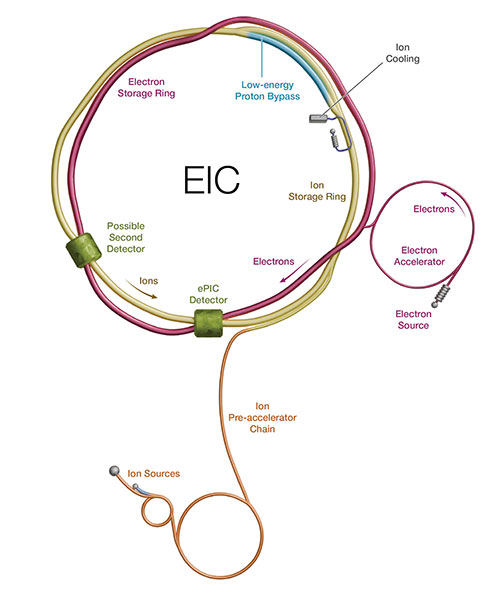 enlarge
enlarge
A schematic of the planned Electron-Ion Collider (EIC), which will consist of new accelerator components — including an electron source, electron accelerator, and an electron storage ring — added to a repurposed ion storage ring and the ion pre-accelerator chain from the Relativistic Heavy Ion Collider (RHIC). (Valerie A. Lentz/Brookhaven National Laboratory)
Referring to the National Academy of Sciences 2018 report that laid the compelling groundwork for the project’s inception, he said, “The case for EIC is strong. It’s stronger today than it was in 2018. We’re going to make sure that this case is presented to the decision makers as we push forward.”
Following Yeck, Daniel Brandenburg, a member of ePIC from Ohio State University, noted that, “The collider system is motivating the advances in technology that are going into our detector system,” so the collaboration can be ready for physics on day one. He spelled out how the experiment will make use of the EIC’s range of particle beams and energies as they become available over the first few years of running.
ePIC and its subdetectors will take advantage of modern analysis techniques to provide precision particle tracking and identification, as well as the ability to image “deep, exclusive processes” such as gluon distributions.
“We are developing our computational systems and our software framework to be able to look at the physics performance of these key measurements,” Brandenburg said.
The collaboration is planning for important milestones in the coming year, including detailed design reviews of each detector system. The goal is to ensure systems are at 70% design maturity by the time the project reaches its next DOE milestone, or critical decision.
“We have been working tirelessly on developing the designs of each of the detector subsystems,” Brandenburg said. “We’re on track.” With ePIC members now representing 180 institutions in 25 countries, he noted, “We have to train our community and our students to be ready to do physics and to have a good idea of what we can accomplish when the machine first turns on.”
 enlarge
enlarge
An engineering model of the future ePIC detector at the Electron-Ion Collider. (Sean Preins/VIRTUE)
Quality of life
During her talk, Laboratory Director Hewett pointed out several recent changes to the Brookhaven campus to improve the experience and facilities for guests, including the consolidation of badging, housing, and the Guest, User, and Visitor Center in the new Science and User Support Center, or building 101, located at the Lab’s entrance. “We hope that next year, the RHIC & AGS Users’ Meeting will be held in our spiffy new auditorium there,” she said, referring to the building’s spacious conference accommodations.
Other highlights included groundbreaking on a nearby Long Island Rail Road (LIRR) station that will connect the Lab more directly to New York City and area airports, and a revamped Lab cafeteria now serving breakfast and lunch with improved seating, Wi-Fi, and chargers. Some upgrades to existing on-site housing are already underway, Hewett noted, and she hopes to push for more improvements going forward.
“I so appreciate JoAnne’s dedication to the infrastructure at Brookhaven being ready for the users and the user experience,” DOE’s Stephenson said. “I’m very happy about the LIRR, the cafeteria, and the housing. Basic human needs are so important,” she said.
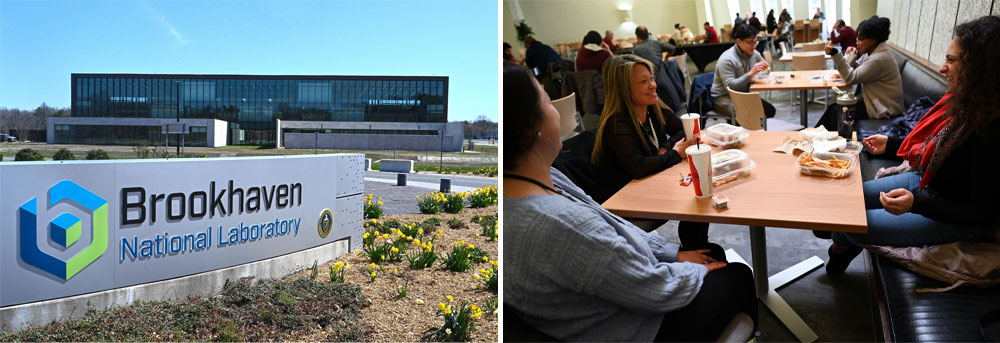 enlarge
enlarge
Left: The Laboratory's main gate with the recently opened Science & User Support Center (Bldg. 101) in the background. Right: The refurbished cafeteria in Berkner Hall at Brookhaven National Laboratory. (Kevin Coughlin/Brookhaven National Laboratory)
Workshops, awards, and a contest
Prior to Thursday’s and Friday’s plenary sessions, attendees participated in two days of workshops on key RHIC and EIC science topics, including how research with their respective capabilities — as well as those at Europe’s Large Hadron Collider (LHC) — connects and sometimes overlaps.
One hot topic: how cutting-edge techniques in artificial intelligence (AI) and machine learning (ML) have and will continue to advance accelerator operations and nuclear physics research. After pointing out the Nobel Prize in Physics awarded last year for work related to AI/ML, and the many ways we are already seeing the impacts of these technologies in the world, Brookhaven Lab physicist Yeonju Go, who summarized the meeting’s AI/ML workshop, said, “The use of AI and ML is very innovative and also full of new opportunities.”
She summarized a series of talks showcasing opportunities specific to nuclear physics experiments, including ways of using AI to fine-tune event triggering to select particular collision events; approaches for simulating, compressing, and analyzing data; and strategies for detecting and correcting anomalies to improve accelerator and detector performance.
Heavy ion events are heavily data intensive, Go noted, producing thousands of particles interacting with lots of detector components. “Simulating all this is highly complex!” she said. In one example she noted, machine learning sped up event simulation from 40 minutes per event using conventional techniques to mere seconds or even microseconds. She highlighted a variety of other AI applications, including one that could identify “jets” of correlated particles emerging from collisions by subtracting the contributions of all the other particles — similar to the way AI image-correction software can remove eyeglasses from photos of people without losing information about the rest of their facial features. As her concluding slide said, “New technologies of AI/ML are opening up a new era of nuclear physics!”
“Machine Learning Applications for Improving Accelerator Operations” was the topic of a Thesis Award given at the meeting to Weijian (Lucy) Lin, now a Brookhaven postdoc, for her Ph.D. work at Cornell University. Zhiwan Xu, who recently received her Ph.D. from UCLA and is now a postdoc at DOE’s Argonne National Laboratory, won the meeting's second Thesis Award for her work on the “Search for the Chiral Magnetic Effect from STAR RHIC Beam Energy Scan II Data with STAR.” Each awardee gave a short talk describing their work.
Merit Awards were given to:
Graduate Students:
- Samuel Liechty, University of Colorado Boulder
- Xudong Xu, Peking University
- Diptanil Roy, Rutgers University
Postdoctoral Fellows:
- Wenbin Zhao, Lawrence Berkeley National Laboratory
- Lipei Du, University of California, Berkeley
- Yeonju Go, Brookhaven National Laboratory
Senior Scientists:
- Chunjian Zhang, Fudan University
- Daniel Brandenburg, The Ohio State University
- Stefania Stucci, Brookhaven National Laboratory
Iris Ponce of Yale University and the STAR Collaboration won the meeting’s Poster Award for her poster titled, “Strange hadron production in O+O collisions at √sNN= 200 GeV at STAR”
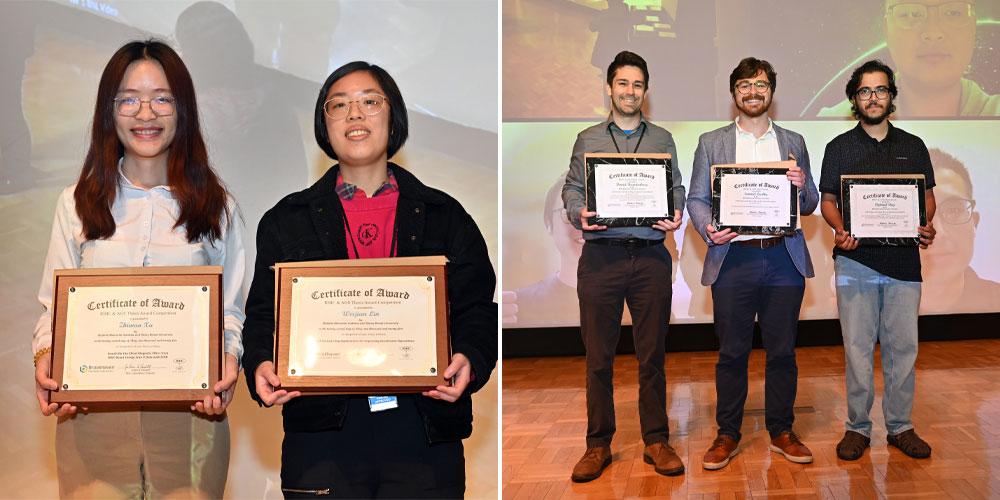 enlarge
enlarge
Left: RHIC & AGS Users' Meeting Thesis Award winners Zhiwan Xu and Weijian (Lucy) Lin. Right: RHIC & AGS Users' Meeting Merit Award recipients Daniel Brandenburg, Samuel Liechty, and Diptanil Roy with additional awardees attending virtually shown in the background. (Kevin Coughlin/Brookhaven National Laboratory)
RHIC 25 Symposium
In a Thursday evening symposium devoted to RHIC’s 25-year history, William Zajc, a physics professor at Columbia University who served as spokesperson for the PHENIX Collaboration at the start of RHIC, began with a personal reflection on the collider’s origins and its first discoveries.
Starting with a 75-year flashback, he cited a paper published by Enrico Fermi in 1950 that, “laid the groundwork for, in effect, our field,” by expressing interest in statistical approaches to understanding particle production, and notes from a class Fermi taught two years later that included a hand drawn map of the phases of matter. While Zajc noted that RHIC’s studies of nuclear matter have exceeded even Fermi’s vision, he said, “I think we’ve done an extremely good job in mapping out the characteristics of what he termed ‘matter under unusual conditions.’”
Zajc’s talk traced the history through the 1970s and 80s, when a confluence of events — including the cancellation of a different collider at Brookhaven — led to the construction of RHIC at a fortuitous energy. “The fact that RHIC serendipitously had the opportunity to work at 200 GeV was fantastic,” Zajc noted, because it enabled RHIC’s ground-breaking discoveries, including the description in 2005 of the nearly “perfect” liquid that is now synonymous with the long-sought quark-gluon plasma.
Following Zajc, Dennis Perepelitsa, an sPHENIX collaborator from the University of Colorado Boulder, recapped his journey from RHIC as a graduate student working on PHENIX to the LHC’s ATLAS experiment and back to RHIC for sPHENIX. Learning from the “shock and awe” experienced at the depth and quality of data from the LHC’s newer-than-RHIC technologies, he and others figured out how to incorporate them at sPHENIX for precision measurements at RHIC. He noted how RHIC is in the “sweet spot” for making measurements of low-momentum jets and for exploring the transition of matter-as-we-know-it to the QGP. “If you build a broadly capable detector, you can follow the science wherever it ends up,” he said, concluding that he was excited about, “bringing the scientific and technical advancements of the LHC back to the United States and finishing the physics mission of RHIC.”
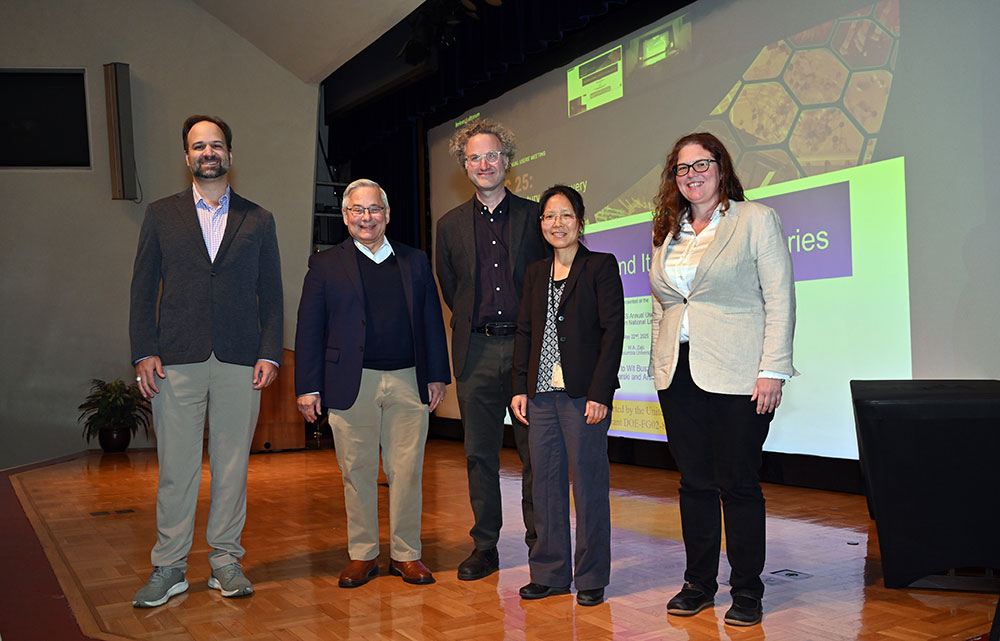 enlarge
enlarge
Brookhaven Lab physicist Peter Steinberg, chair elect of the RHIC & AGS Users' Executive Committee (center), with speakers from a symposium commemorating RHIC's 25th operating year (left to right): Dennis Perepelitsa, William Zajc, Lijuan Ruan, and Jacquelyn Noronha-Hostler. (Kevin Coughlin/Brookhaven National Laboratory)
Brookhaven Lab's Lijuan Ruan, cospokesperson for the STAR Collaboration, then described how STAR has addressed RHIC’s three major science pillars: exploring the inner workings of the QGP, investigating the spin puzzle of the proton, and mapping the phases of nuclear matter. She highlighted the detector’s beautiful particle identification and its systematic approach to studying collisions at different energies to map phase transitions, as well as discoveries of exotic types of heavy antimatter, the perfect liquid’s “vorticity,” and measurements that connect RHIC physics with distant neutron stars. “Stay tuned — many more exciting results are on the way!”
Finally, Jacquelyn Noronha-Hostler, a theorist at the University of Illinois Urbana-Champaign, noted that the nuclear matter phase diagram in the era since RHIC discovered the perfect fluid “is still a cartoon,” like the one Zajc showed, “but it’s updated, and it’s more complex.” She highlighted some of the advances RHIC has enabled, but maintained that, “we still don’t have all the answers today. We don’t even have all the questions. But we get to keep finding really cool stuff!” She commented on how RHIC findings can be applied to understanding black holes, binary star mergers, neutron stars, and supernovae. Riffing on the idea that RHIC’s collisions recreate, in miniature, conditions just after the Big Bang, she said, “Even though we’re the ‘little bangs,’ we’re having a huge impact … finding things that are just unexpected, and it keeps going into other fields.” Highlighting technological advances, workforce development, medical advances, computation, and the science still to come from RHIC and the future EIC, she said, “I don’t think the story is over yet, by any means.”
Brookhaven National Laboratory is supported by the Office of Science of the U.S. Department of Energy. The Office of Science is the single largest supporter of basic research in the physical sciences in the United States and is working to address some of the most pressing challenges of our time. For more information, visit science.energy.gov.
Follow @BrookhavenLab on social media. Find us on Instagram, LinkedIn, X, and Facebook.
2025-22470 | INT/EXT | Newsroom





